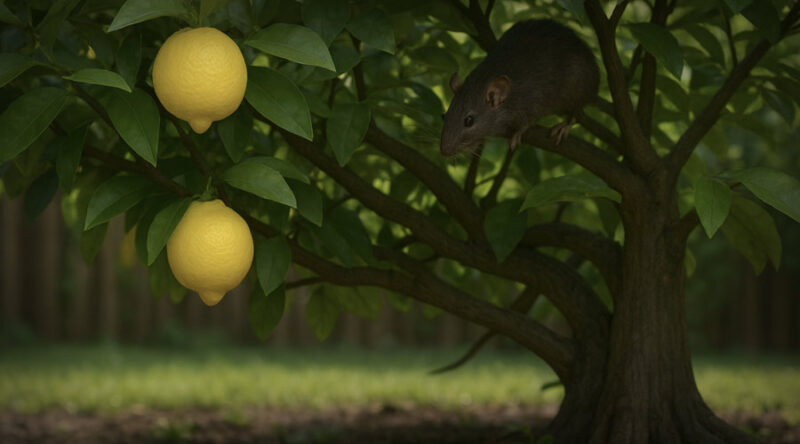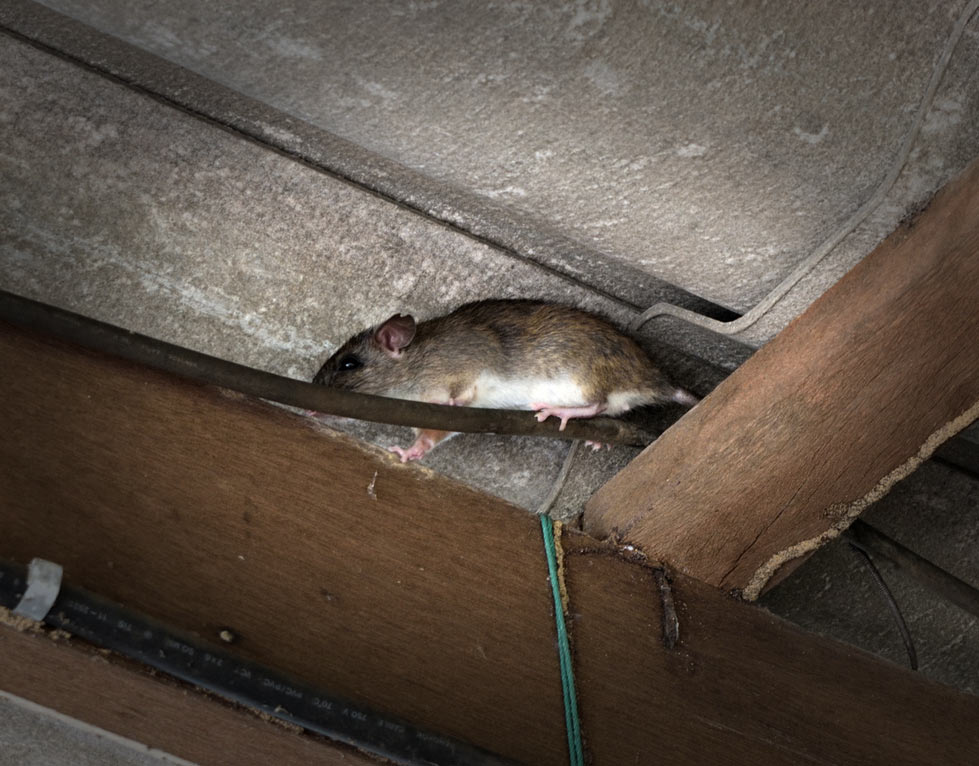© 2000, Day & Nite Pest Control | 6800 Sierra Lane • Dublin, CA 94568 | 1-800-Day-Nite All rights reserved.
A reputable Bay Area Pest Control Company.
Site Design by mbethdesign.com

If you live in the East Bay, you may have noticed how many people have fruit trees in their backyards. In many neighborhoods in the area, you can find citrus, persimmon, avocado, and even fig trees. These trees grow tasty fruits and vegetables, but they also bring in roof rats, which is not good.
.
Roof rats are good at climbing and do well in cities and suburbs. They like to nest in attics, dense shrubs, and yes, trees, rather than digging holes in the ground like their cousins. Fruit trees are the best place for them to live because they give them:
Citrus, persimmons, avocados, and other fruit-bearing trees are especially appealing because their harvest seasons overlap, which means there is food available for most of the year.
..
When roof rats get into fruit trees, they will move closer to your house in no time. They can spread disease, chew through wires, and make food unsafe. Droppings, gnaw marks, and scratching sounds at night are all signs that you might have them, even if you can’t see them.
.
.
You don’t have to cut down your fruit trees, but you do need to stay on top of cleaning:
.
Cleaning and cutting back on plants can help, but once roof rats get a foothold, it’s hard to get rid of them on your own. We at Day & Nite Pest Control are experts in inspecting and keeping rodents out of East Bay homes. Our team can find weak spots, lock down entry points, and suggest long-term plans to keep your home and yard safe.
Don’t let roof rats take over your house or your fruit trees. Get expert advice on how to keep your yard free of rodents by scheduling an inspection today.

Yes. Citrus, persimmons, avocados, figs, and other backyard fruit are very appealing to roof rats. They will eat fruit that is still on the tree and fruit that has fallen to the ground. That’s why it’s so important to harvest and clean up on time to stop it.
Some signs that you might have rats are fruit that has been gnawed on or hollowed out, droppings near trees or fences, scratching noises at night, and nests made of shredded plant material in thick shrubs. You might also see greasy rub marks on walls or fences where rats walk.
Norway rats are bigger and less agile than roof rats. Norway rats like to dig holes in the ground, but these rats like to nest in trees, attics, and rooflines. Roof rats are the ones you see climbing fences or running across power lines.
Yes. Cutting back branches at least three to four feet away from roofs, fences, and utility lines gets rid of the natural “bridges” that roof rats use to get into your house. Pruning also takes away places where rodents can hide in thick plants, making your yard less appealing to them.
Yes, they can be. Droppings, urine, and parasites from roof rats can spread diseases. They also chew on electrical wires, which could start a fire. Even a small number of these pests should be taken seriously because they can quickly get out of control.
Start with sanitation: harvest ripe fruit promptly, remove fallen fruit daily, and keep trees pruned. But if rats are already established, professional help is the best option. At Day & Nite Pest Control, we provide thorough inspections, exclusion work, and treatments tailored for East Bay homes.